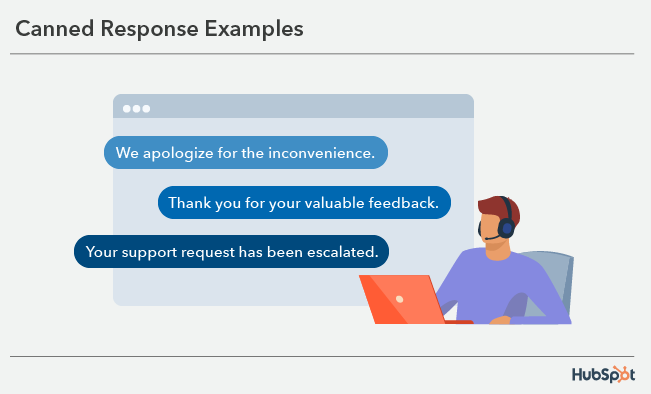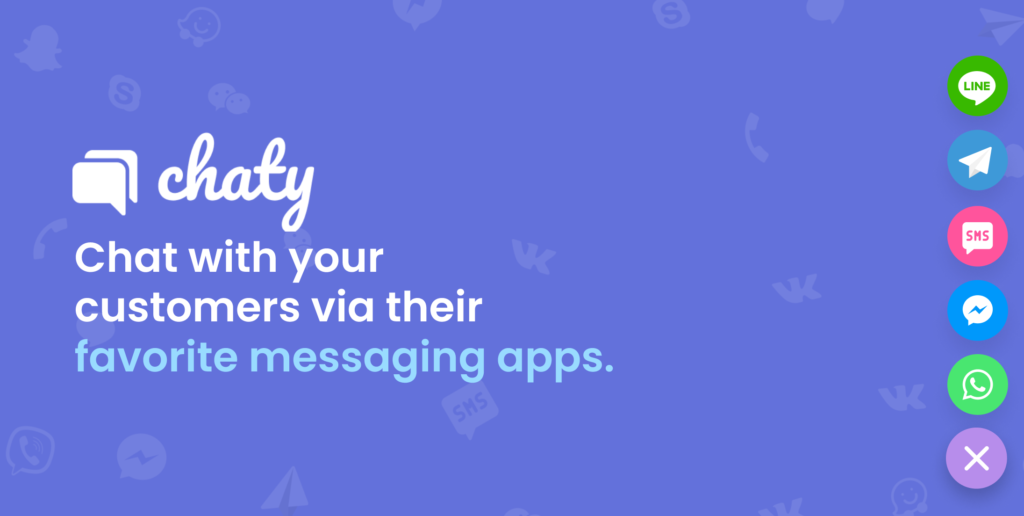Do you happen to be looking for advice on dealing with the occasional frustrated or angry customer in a live chat?
You may be searching to know how to handle angry customers because customer support is a tough job. Sometimes, a customer will initiate a conversation that does not always involve happy news.
At best, you may have customers that ask for assistance using emojis and thank you phrases throughout the chat, but, at worst, you will have to bear rude customers that may even call you names or swear at you.
There are a group of customers that fall just in between the best-case and worst-case scenarios – the frustrated, the angry, and the dissatisfied – and these are the ones that you need to handle with the utmost care when talking to them.
Luckily for you as a support agent, there are time-tested tricks that you can use to prevent a tense conversation with these customers from getting out of hand. If necessary, you may even need to turn to effective scripts specifically designed to diffuse the angry customer scenario in a free website chat app.
Common Reasons Behind Customer Frustration
Regardless of how much customer context you may think you have, you may never know precisely why a customer is so frustrated.
Generally, it is because of the negative experience they are having with your company, but sometimes, there are additional stressors involved that may add to a customer’s frustration.
For example, a customer may already be under pressure in their professional or private lives, be exhausted or upset about current events, or simply be bad at handling anger.

This is why you should never take the anger of a customer personally. Even though it is not ideal for bearing the brunt of frustrated customers in a multichannel chat widget, you must remember that a customer is primarily upset about the situation and not about you.
To understand this concept better, you should familiarize yourself with all the situations that may lead to a customer being frustrated so that you can develop a strategy to fix these things accordingly. Here are a few of the prime reasons behind customer frustration:
1. Deceitful Tactics and False Claims
One of the main reasons for customer frustration or annoyance is dishonesty or not being transparent in your dealings.
Promises, claims, and deceitful tricks may land you the customers you need the first time, but when they catch on, they will most likely damage your brand’s reputation. As a consequence, you will lose these customers forever.
Brands often use claims like “the best” or “the most durable” to sell their products to customers. Still, they end up creating a disappointing experience for the customers when they realize that the reality of the product they bought is different from the promises made.
2. A Long Service Wait Time
Another common reason for customer frustration is an extended service waiting time. One of the worst and most common business practices is making customers wait for a service they are paying for.
Whether these customers are waiting for their food to be served, or the shipping time of the products they have bought is taking weeks, or there is a long queue to pay bills, there will be complaints of bad customer experience expressed through the click of the WhatsApp chat button or a Facebook Messenger chat button.
It is very likely for a business to attract many unhappy customers if it fails to value a customer’s time. Long and timely processes to resolve an issue or having a lack of resources that result in delayed services will definitely end up frustrating your customers.
3. Robotic or Rude Behavior of Your Staff
Many customers have become frustrated by the rude and even robotic behavior of customer service staff, who may come across as lacking in empathy when speaking to them in the free website chat app.
To illustrate, it can be very frustrating for a customer to walk into a shop looking for a product and be attended to by a staff member who is either on their phone or making the customer feel unwelcome. The same goes for customer issues treated in a multichannel chat widget.
This is why it is so crucial that you hire staff that is both emphatic and displays a positive attitude if you want to create a loyal customer base.
Customer service reps who come across as inattentive and rude to your customers’ needs will create the impression that your business does not care and may make your customers feel like they made the wrong choice.
4. Cold and Unresponsive Attitude Towards Resolving Complaints
Not giving your attention to the issues your customers have will likely result in them having a bad customer experience and displaying emotions of frustration, especially when there is a cold or unresponsive attitude to an angry customer, as this may very well aggravate the situation even more.

Instead of coming up with excuses, you should be listening to your customers, empathizing with them, and ultimately, helping them find a solution for their issues.
Failing to give your customers a clear timeline for resolution or not responding will frustrate them, and they will express their negative words about your business practices elsewhere.
By simply not being helpful, you are giving them the go-ahead to complain to their friends, family, and strangers about the bad treatment they have received.
5. Inconsistency in the Quality of Products or Services
Not maintaining a certain level of consistency in the quality of your products and services can easily annoy your customers. Whether you are a clothing brand or a restaurant, even a popular ghost kitchen, your customers will complain if there is no consistency in the quality of your products or services.
Any time customers buy from your business, they expect to receive the same quality of products and services each time. Therefore, to retain your customers and prevent customer frustration, you should constantly deliver the same quality of products and services.
How to Handle Angry and Frustrated Customers on Live Chat
When handling angry and frustrated customers on live chat, you must emphasize their frustration. In addition to empathy, there are also many other tips to consider when learning how to deal with an angry customer, such as:
1. Maintaining a Consistent Tone
Like music, your piece will fall flat if the tone is off. Just like “What can I help you with?” and “Anything else?” is the same question, they appear to differ widely in tone.
If you take the questions above, one feels friendly and professional, while the other is sliding straight into a bitter-sounding territory. You should want most customer interactions to fall within a friendly and professional environment.

You can do this by defining the collective voice of your support team and developing a set of standards to follow when engaging in personal and human conversations. This will allow each member to maintain a unique voice without sounding like they are talking from a script.
An example of this can be seen in the image below:
2. Using Positive Language
Positive language should be evident throughout a chat to keep the conversation moving forward and prevent any accidental conflicts that may arise due to miscommunication. Words like don’t, won’t, and can’t – and phrases such as “you need to” or “you have to” – are usually interpreted with negative connotations.
You should avoid words that cause any type of knee-jerk reaction from customers and instead focus your comments on how you will fix the issue.
Below is an example of what is considered to be positive language:
- Negative Language – No, we cannot do that for you.
- Less Negative Language – I can see how that would help you, but unfortunately, we do not possess the resources to do such.
- Positive Language – As of now, there is currently nothing that we can do. However, we appreciate you taking the time to let us know exactly what it is that you are looking for – the majority of the improvements we have made are because of ideas and suggestions like yours; thank you so much for reaching out to us!
You are focusing on the proposed solution by simply redirecting the conversation with a customer from adverse to positive. Generally speaking, when an outcome takes center stage, it will reduce the chances of your customer being upset and frustrated.
Positive language easily allows for the door of future interactions to be kept open, and the customer will not feel they have wasted their time reaching out to you.
3. Keep Things Brief but Not Brusque
Regardless of how amazing you think your reply is if your response is 1,000 words, it is likely that a customer is going to ignore it. Large blocks of text will usually be skipped over, so keep your sentences and paragraphs short and sweet.

You can even use videos, images, and links to a knowledge-based article to keep your replies concise. Your goal for a support reply should be to answer the questions a customer has and make them feel heard.
To illustrate, you may very well be able to answer questions needing a lot of information with a link to an article within your knowledge base. Still, it is more practical to explain this in a reply that is one or two sentences.
4. Reply Promptly
Sometimes, when you modify a saved reply with a customer’s name and acknowledgment of their issue within 60 seconds, it can make some feel like their complaint was not even read by you. In this case, letting non-urgent live chats sit for a few minutes is entirely okay.
On the other hand, customers in a dire situation will want a response promptly, so you must make responding to them your number one priority.

To help, you can set up a separate folder from the main-support queue to filter out less critical messages. By doing so, the team can quickly tell urgently what customer complaints require help.
5. Always Use the Name of Your Customers
If you fail to use your customer’s name in a greeting, you are forfeiting the opportunity to put the psychology of consumer behavior to good use. In other words, you should be able to automate using your consumer’s name. However, ensure that you get it right. David is David and not Dave!
On the other hand, if you do not have a customer’s name, you can opt for a generic, friendly greeting instead, such as “Hello there!”
6. Mirror Your Customer’s Tone
To let your customer know that you are on their side, you need to mirror their tone; for example, if your customer is formal, you should be formal. If they come across as more casual, you should relax your tone.
The same can be said if your customer is excited about something, then you need to bring the energy. However, if they are frustrated and angry, bring it down a notch.
Mirroring can put your customers at ease and build rapport by reducing the interpretation needed to understand what you are trying to communicate.
7. Be Cautious with Jokes
Any sarcasm, jokes, and irony do not easily translate through text and can cause the intent of your reply to be misunderstood. While a GIF or emoji may certainly help here or there, there still appears to be no font for sarcasm, so use every word with care and thoughtfulness.
8. Offer to Help Them Further
You must avoid bluntly ending a conversation with customers, so they do not feel you are pushing them away. Instead, invite them to continue their discussion by saying, “Let me know if you have any further questions. I am more than happy to help where possible.”

Ensure that your customer is aware that you are willing to assist with any of their questions or lingering concerns. There is no such thing as a silly question in support, and they should know that.
9. Actions Speak Louder Than Words
Where possible, you should take illustrative screen recordings to show customers how to do something rather than typing it out step-by-step.
Rather than telling a customer what to do, you should be showing them. Something as simple as this will save you a lot of back-and-forth conversation and make all the difference.
10. Avoid Customer Service Cliches
The wording makes all the difference. To put this into perspective, a trite platitude that customers are sick of hearing is: “Your message is important to us and currently being transferred.”
Instead, explain to your customer why their transfer is to their benefit by saying: “Hi there! I’m going to introduce you to one of our customer success specialists who will be better able to answer your questions.”
What is a Good Chat App for Handling Customers?
One of the customers’ most common complaints when dealing with customer support is that they don’t feel like they are speaking to a human.
All these years of dealing with customer service that is robotic, insensitive, and inhuman have hardened everyone involved, and, as a business, you can do better.
If you are on the side of humanity and you have Chaty as a chat app for handling customers, then the rest will take care of itself.
You can use Chaty to show your customer’s a chat button on your website that will easily connect them to their preferred messaging app. Chaty supports apps like Facebook Messenger, Telegram, WhatsApp, Viber, Skype, Contact Forms, and much more, covering the most popular social networks.

Why Choose Chaty?
Not only does Chaty bring the best of social media platforms to your website, but its user-friendliness also brings to life:
- Frictionless communication
- The support of custom channels
- Improved quality of support
- Customizable and amazing UI
- Triggers and Targeting
- Tracks metrics via the use of Google Analytics
- And more!
You should be meeting customers where they are by providing them with empathetic canned responses that will ensure that they will feel heard – regardless of the channel they are using to contact you in a multichannel chat widget, be it a WhatsApp chat button or a Facebook Messenger chat button. By doing so, you can be sure that they will begin to feel happier in no time.
Don’t get left behind! A free website chat app like Chaty is precisely the tool needed to help all businesses succeed in handling angry and frustrated customers.


